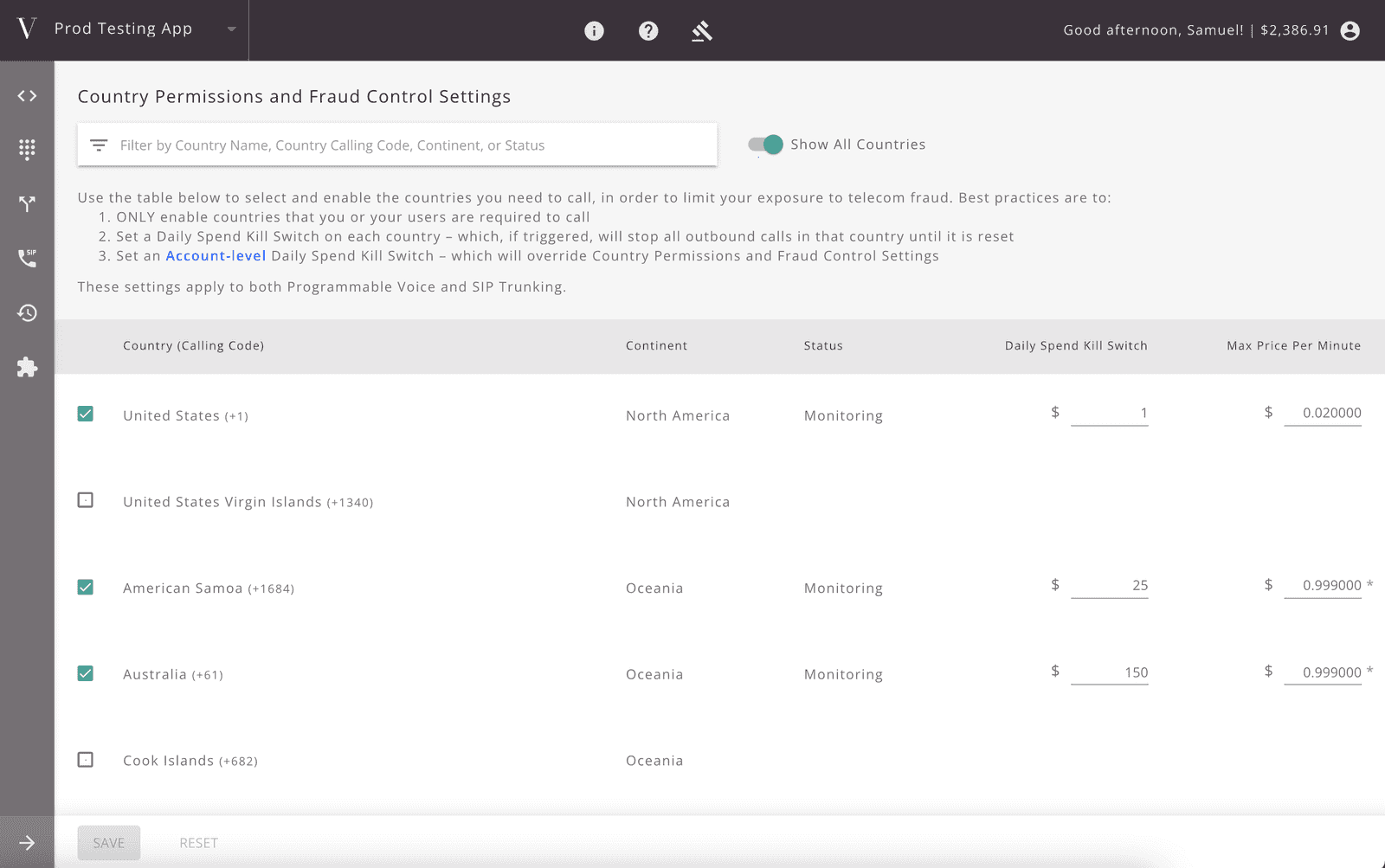Con-fraud-ulations, You Got Robbed // Combatting Telecom Fraud
November 4, 2021 // Product
Telecom Fraud
Fraud in telecom generally comes in three disgusting flavors. The first, and probably most commonly talked about, is fraud against an individual person - consumer fraud. People robbing other people. When your elderly mother receives a call “from the IRS” informing her that, unless she gives up her Social Security number, past tax returns, and bank account info, life-as-she-knows-it is in jeopardy ... that’s fraud.
Much has been written about telecom fraud and how it impacts individuals, for more information on consumer fraud and what’s being done, at large, to combat the issue check out our post on STIR/SHAKEN. You can also listen to this podcast from Reply All for an entertaining and troubling look at the world of phone scams. And this one, too.
While consumer fraud is a massive issue, it isn’t the kind of telecom fraud we will be focusing on in this article. Rather, we will focus on two examples of telecom-related fraud that impact businesses. The basic premise is someone hacks your system and leaves you with a massive telecom bill. Businesses who have fallen victim to these types of fraud won’t soon forget.
Credential Stealing
One of the main sources of business-impacting telecom fraud can happen if someone gets ahold of the credentials for your telecom service. Then, at an opportune time (typically over a holiday or weekend in order to go unnoticed for as long as possible), they place an inordinate amount of calls, often to a very expensive destination. Since these calls were technically placed through your account, using your credentials, guess who gets stuck with the bill.
Chargebacks
Telecom providers who support online, self service may be very familiar with another type of telecom-related fraud - chargebacks. The typical story goes like this - a new user signs up for your service, however they use an unauthorized credit card to use your service. Then, they rack up as big of a bill as they can, before getting caught, at which time the charges are disputed by the person whose card was stolen. This leads to a non-negotiable chargeback, and the bill winds up in your lap. These types of telecom-related chargebacks can be crippling to businesses.
Detecting Fraud
Companies of all sizes need to be aware of telecom fraud. So, the question you’re now asking yourself is: how do we better defend against these costly fraud schemes? There are a number of preventative measures to help reduce your chances of falling victim to telecom fraud, however it is likely impossible to entirely eliminate your risk. The next best thing is to be able to detect potential fraudulent activity early, so the impact can be minimalized. Monitoring and understanding your normal traffic patterns gives you the ability to detect abnormalities.
There are two major areas to monitor in order to help detect fraud early:
- Call Volume Monitoring // Abnormal traffic spikes on your telecom account could be a sign of fraudulent activity. Continuously monitoring your call volume enables you to alarm when abnormal volumes emerge. That said, it may take some time to tune your alarms. For example, most businesses have significant fluctuation between their peak times (workweek) and during nights/weekends. This disparity often leads toward measurements that compare your current volume to your historical volume on that particular time of day on that particular day of the week.
- Call Destination Monitoring // Repeated calls to high priced destinations can be a sign of fraudulent activity on your account. There are a number of very high priced destinations to call around the world. If you don’t typically call those destinations from your account (or even if you do), it is wise to monitor calls to expensive destinations and alert on abnormal activity, or new destinations. That way if someone is attempting this type of fraud on your account, you can shut it down quickly.
Voxology’s Solutions
We’ve learned that many businesses don’t have the necessary tools (or provider who enables them) to monitor their own traffic. Voxology has equipped our customers with the tools to combat telecom fraud via a number of industry-leading anti-fraud features:

- Country Permission List // We enable you to place limitations on what countries can be called by the users on your account. Liechtenstein, for instance, is an incredibly expensive place to call. Unless you are doing business in Liechtenstein, it is best to leave that destination disabled. If your users are truly attempting to call a county on the block list, for legitimate reasons, it can be updated instantly in our self-service Portal.
- Price-Per-Minute Max // You have the option to tell us, “If we ever ask you to place a call, and the price-per-minute is over 10 cents a minute, do not allow us to place the call.” In fact, we give you even more granular controls when it comes to price-per-minute options. For instance, some countries have both low and extremely high priced destinations. You can configure your account to allow calls in Tajikistan as long as the price-per-minute is within an acceptable range.
- Kill Switch // Our customers have the option to set a daily spend limit on their account as well as on any specific country. You can tell us, “If we ever spend more than $100 a day in Tajikistan, shut down all future calls to that country we review.” This limits the amount of fraud that can ever happen over the course of a single day, and helps save you from facing an enormous bill.